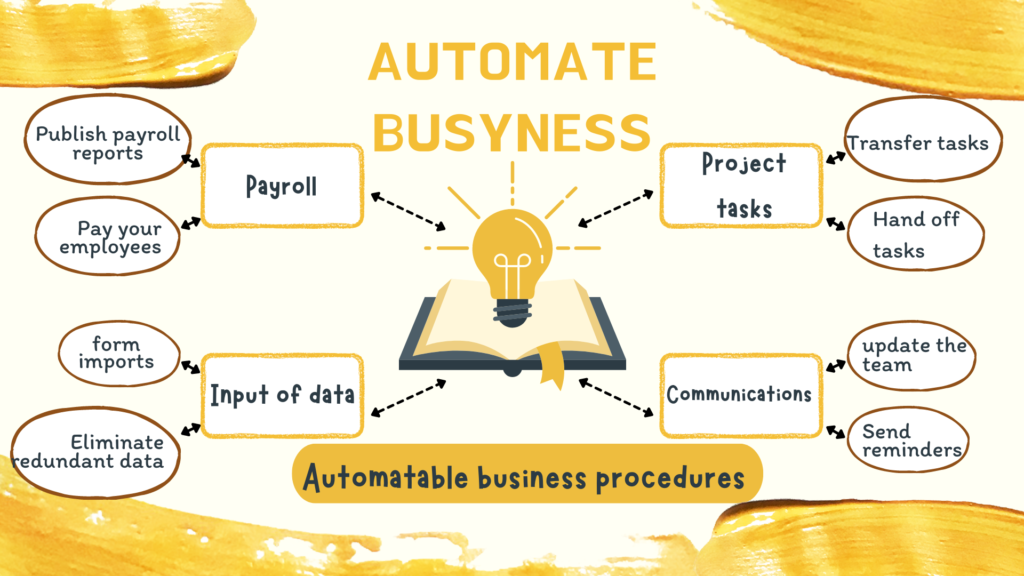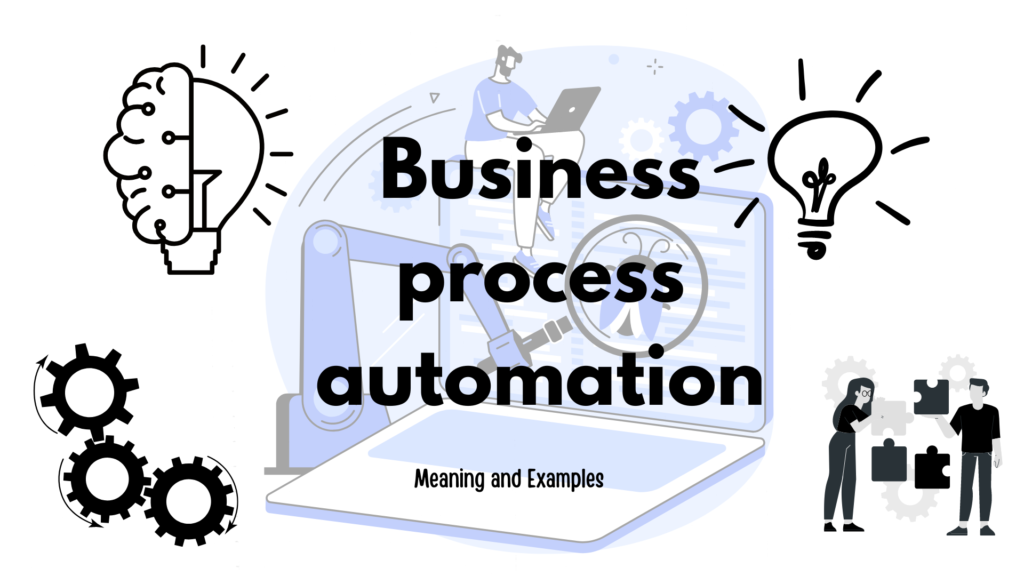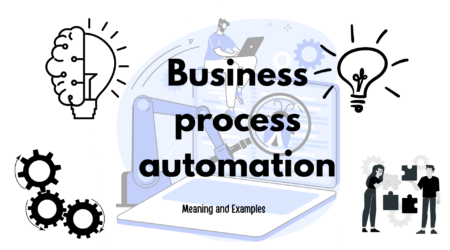Business automation processes (BPA): There are many different approaches to automation. It’s crucial to distinguish between terminology like business process management and robotic process automation.
For good reason, business process management (BPM) and business process automation are frequently conflated. Business process management, after all, is the general name for a number of automation strategies.
BPM is a discipline that focuses on discovering, modelling, analysing, measuring, improving, optimising, and automating business processes. Thus, BPA is merely a minor component of BPM.
Although they are similar, the two names differ in a few ways. RPM is a particular technique that incorporates software robots and artificial intelligence, whereas BPM is a comprehensive approach that uses technology-enabled automation.
RPA is a type of business process automation that is, by definition, based on either artificial intelligence or metaphorical software robots.

Before going too far with automation, it’s a good idea to brush up on the features accessible to you as your capabilities will depend on the hardware and software you have in place. Find out if workflow management software is appropriate for you if you don’t currently have tools in place.
Here are a few of the most typical jobs that business process automation can be used for.
For project work, automation can be used to:
- Transfer tasks to the appropriate project
- Affect the appropriate teammate with tasks
- Inform project stakeholders of any dependencies
- Decide on and modify due dates
- Hand off tasks when it is appropriate.
You can automatically assign team members, simply adjust due dates, and notify stakeholders of changes by automating busy work like managing project tasks.
Another method of streamlining recurrent duties is via automating communications. These minor (but time-consuming) chores, such as project reminders and weekly team updates, can be a wonderful starting point for developing a more intelligent business process.
Automation in communications can be used to:
- Send reminders for projects
- update the team
- Send meeting minutes after
- Send communications to customers
- Send a series of emails after purchases
You can see from the examples above that there are many options available when wanting to automate conversations. Each of these can help with customer support and both internal and external updates.
The majority of businesses look to automation as their primary data entry solution. It takes a lot of time and is a laborious task. Data entry is another monotonous chore that typically requires weekly or monthly work.
Automation can be used for data entry to:
- Eliminate redundant data
- form imports
- Identify and stop data discrepancies
- Send information to the right stakeholders.
- Keep customer data on hand
Along with these features, automated data entry can aid in reducing operating costs incurred when performing tasks manually.
Automation can assist in gathering and routing customer sales order data with the correct CRM in place. This can be useful for a variety of things, like providing customer service and tailoring marketing efforts.
Automation for sales orders can be used to:
- serving clients
- individualize marketing initiatives
- Estimated product success
- following market trends
These abilities will not only save up time for your staff, but they can also support future growth initiatives for your company and help it compete in the market.
Payroll automation can be used to:
- Pay your employees
- Publish payroll reports
- Give team members pay stubs.
- hours to account for PTO
- help employees file their taxes
- Adapt the benefits of open enrollment
Payroll is a good choice if there is one process you automate in order to reduce the workload on your staff.
With the correct technology, lead nurturing is a terrific process to automate as well. This can take the shape of content promotion through targeted advertisements or email campaigns like welcome or reactivation series.
For lead nurturing, automation can be used to:
- Establish campaign workflows
- Share pertinent information with prospective clients.
- email leads nurturing
- Save customised lead information.
While there are many effective ways to use automated lead nurturing, make sure to constantly update campaigns based on key performance factors (KPIs). Setting up a campaign and then completely forgetting about it is the worst thing you can do, so make sure to keep improving on past results.
ALSO READ
You may also like our other related articles on automation :







